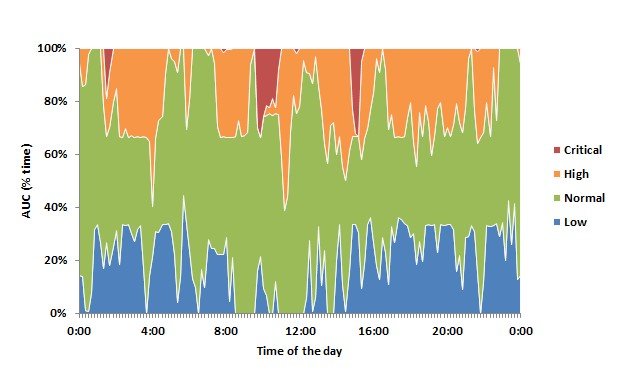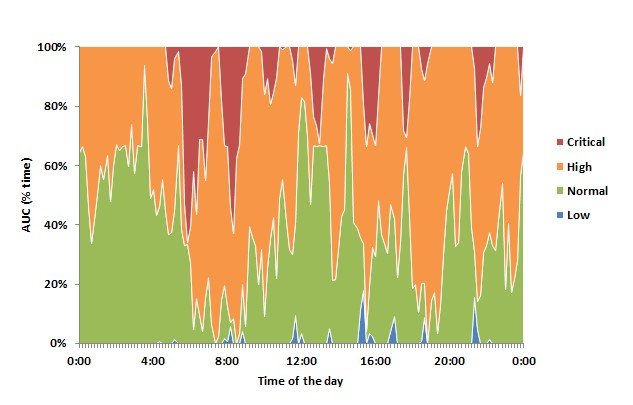How RumenAI improves fermentation
Ruminal propionic-producing bacteria thrive in high dCO2 environments, and their growth and function are enhanced by elevated dCO2 levels (Paynter and Elsden, 1970; Dehority, 1971; Macy et al., 1978). This, in turn, leads to increased milk yield and enhanced nutrient absorption. The mechanism behind this positive effect is the preferential cotransport of ruminal water and CO2 through aquaporins (Veenhuizen et al., 1988; Rackwitz and Gabel, 2018; Rabbani et al., 2021). This process provides the necessary intracellular protons and bicarbonate for SCFA/Na exchange, facilitating nutrient absorption (Ash and Dobson, 1963; Gabel et al., 1991).
Our indwelling ruminal sensor can optimize rumen function by continuously monitoring ruminal dCO2 concentrations and providing real-time feedback to farmers. This allows them to make informed adjustments to their feeding practices, such as modifying diets or changing feeding schedules, to maintain optimal dCO2 levels and maximize animal performance (Laporte-Uribe, 2023).
This approach, known as "precision ruminal fermentation," aims to select diets and implement feeding management strategies that optimize dCO2 concentrations, leading to improved feed conversion efficiency, reduced waste products, and enhanced animal health.



The indwelling sensor continuously measures ruminal dCO2 concentrations and provides real-time feedback to farmers. This data can be used to identify patterns in dCO2 levels and identify potential issues with rumen function. For example, if the sensor detects spikes in dCO2, it could indicate that CO2 holdup is developing. This is a condition where dCO2 builds up in the rumen due to an imbalance between production and removal. CO2 holdup can lead to subacute ruminal acidosis (SARA), a serious metabolic disorder that can cause a number of health problems in ruminants (Laporte-Uribe, 2023).
By monitoring dCO2 levels, farmers can take steps to prevent CO2 holdup, such as adjusting their feeding practices or modifying their diets. For example, they may want to reduce the amount of rapidly fermentable carbohydrates in the diet, which can contribute to CO2 production.
In addition to detecting CO2 holdup, the sensor can also be used to assess overall rumen health and identify potential problems with nutrient absorption. If dCO2 levels are too low, it could indicate that the rumen bacteria are not producing enough propionate, which is the main energy source for ruminants. This can lead to a number of problems, such as reduced milk production and weight gain.
By monitoring dCO2 levels, farmers can make informed decisions about their feeding practices to optimize rumen function and animal performance. This approach, known as precision ruminal fermentation, has the potential to improve feed conversion efficiency, reduce waste products, and enhance animal health.
Here are some specific examples of how the indwelling sensor can be used to optimize rumen function:
Detect and prevent CO2 holdup: As mentioned earlier, CO2 holdup can lead to SARA, a serious metabolic disorder in ruminants. The indwelling sensor can detect spikes in dCO2 that could indicate CO2 holdup. This allows farmers to take steps to prevent the condition, such as adjusting their feeding practices or modifying their diets.
Optimize propionate production: High dCO2 levels are beneficial for rumen function because they support the growth of propionic-producing bacteria. The indwelling sensor can be used to assess propionate production and make adjustments to the diet or feeding practices to optimize levels.
Monitor nutrient absorption: Dissolved carbon dioxide plays a role in nutrient absorption by the rumen epithelium. The indwelling sensor can be used to monitor dCO2 levels and assess the effectiveness of different feeding strategies on nutrient uptake.
By providing real-time data on ruminal dCO2 concentrations, the indwelling sensor can help farmers make informed decisions about their feeding practices and optimize rumen function. This can lead to improved animal health, reduced waste products, and increased productivity.